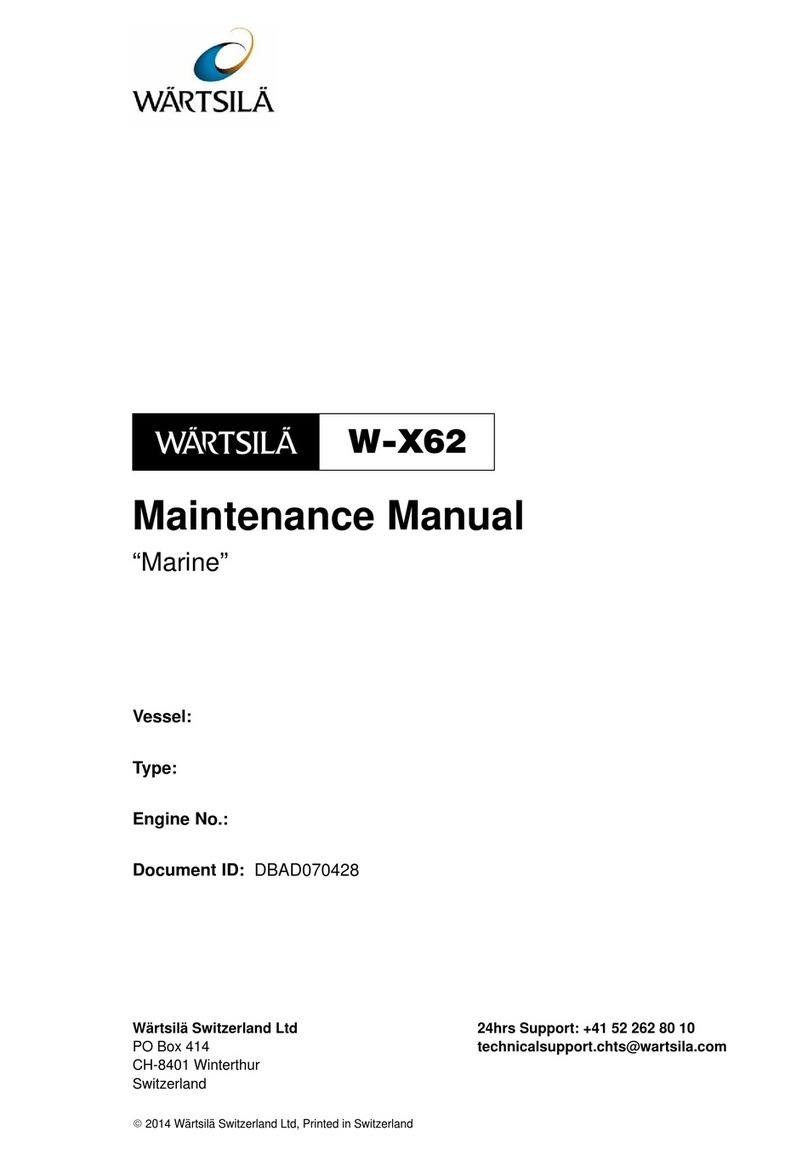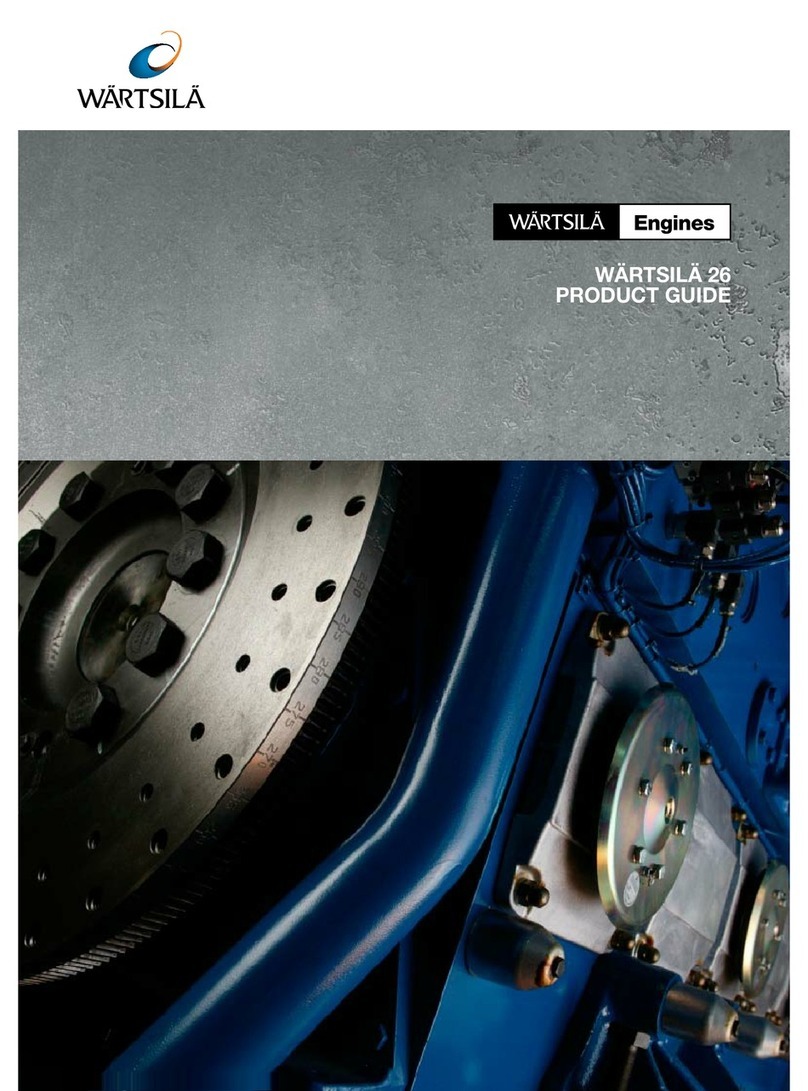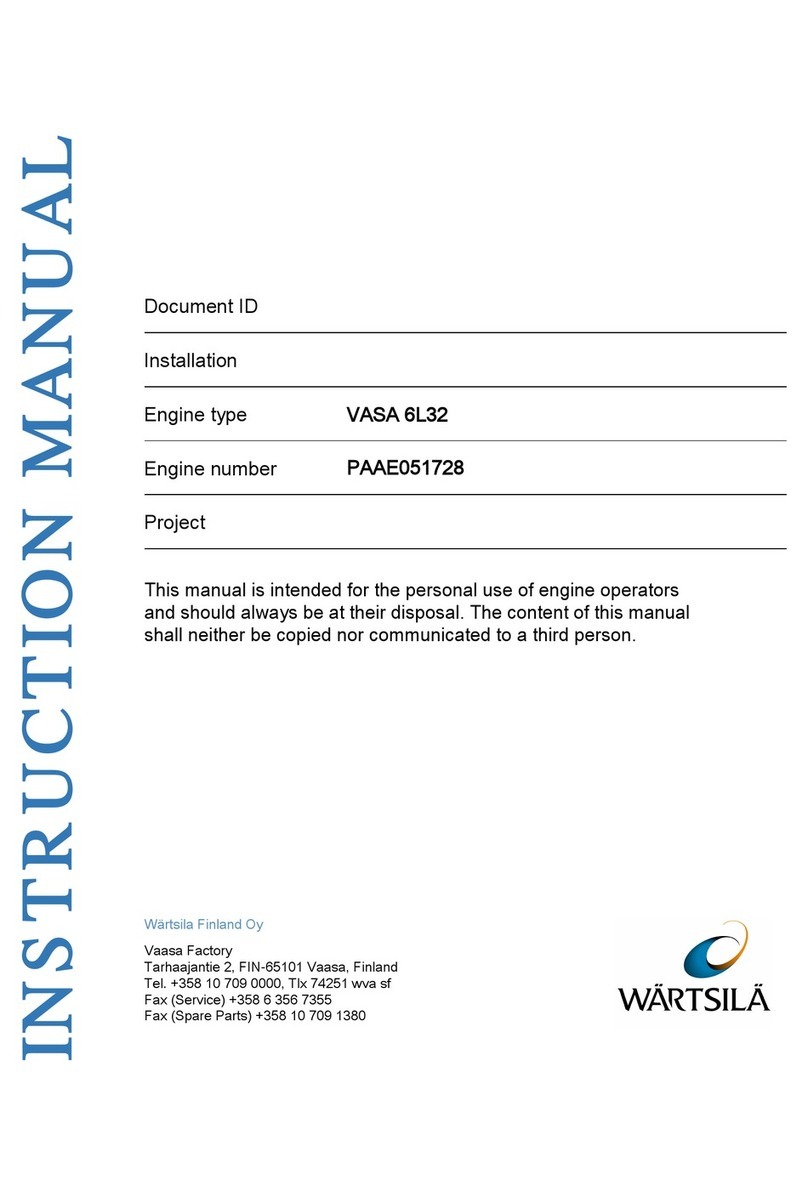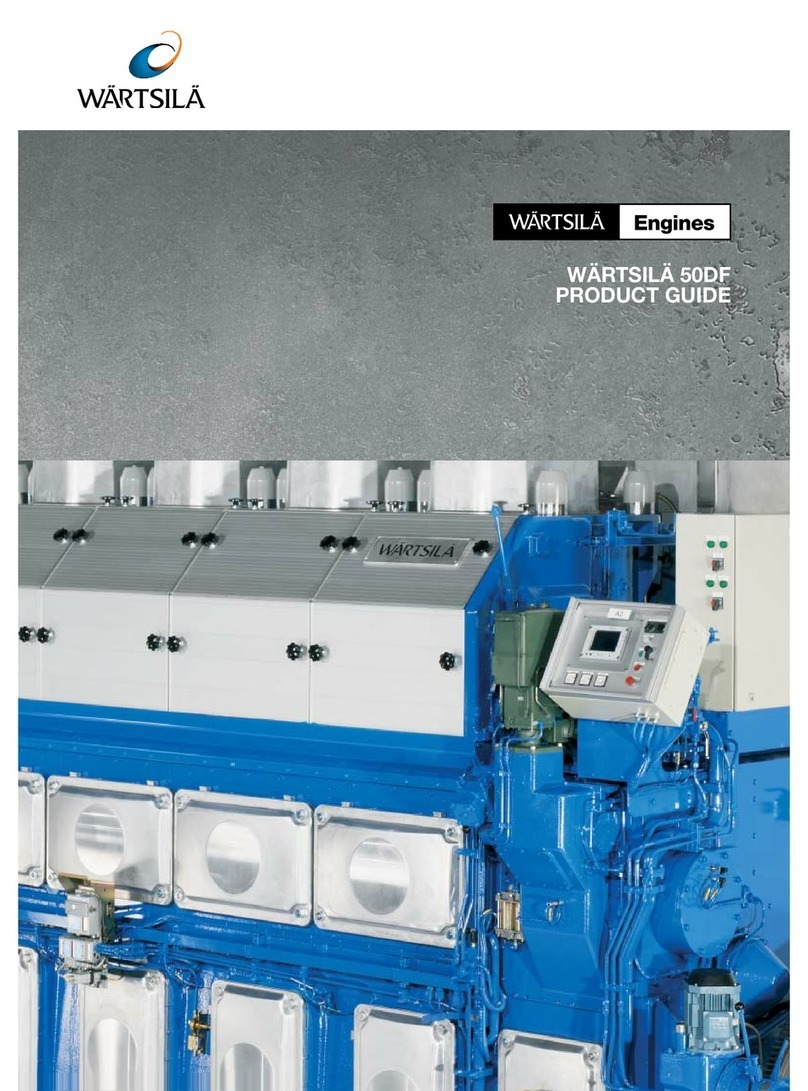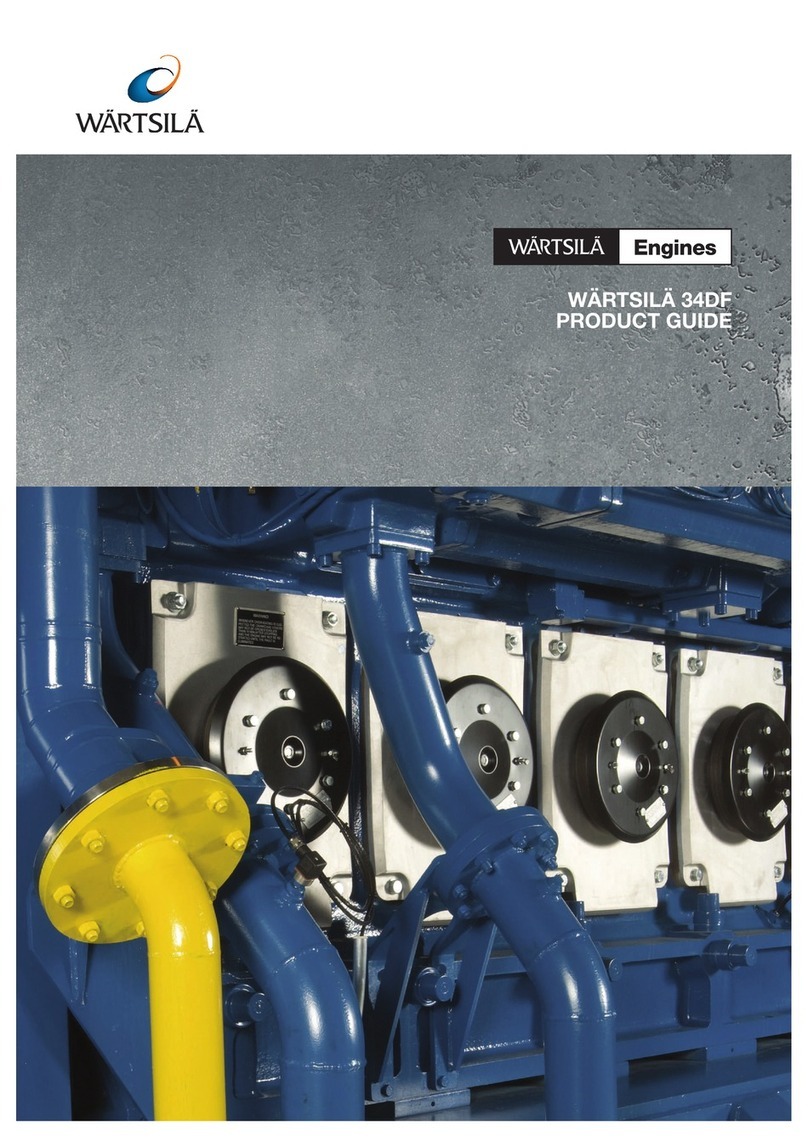
00.Contents, Instructions, Terminology
00.1 Contents of the Instruction Book
This Manual contains data and instructions for operation and
maintenanceoftheengine.Basicgeneralknowledgehasnotbeen
entered. Consequently, it is assumed that the engine operation
and maintenance staff is well informed of the care of diesel
engines.
Wärtsilä Diesel reserves for itself the right to minor alterations
and improvements owing to engine development without being
obliged to enter the corresponding changes in this Manual.
The diesel engines will be equipped as agreed upon in the sales
documents. No claim can be made on the basis of this Manual as
herearedescribedalsocomponentsnotincludedineverydelivery.
Exact engine build-up in all details is defined by the specifica-
tion number on the name plate located on the engine. In all
correspondence or when ordering spare parts, be careful
to state engine type, specification number and engine
number.
This Manual is supplemented by the Spare Parts Catalogue
including sectional drawings or exterior views of all components
(partial assemblies).
00.2 General rules
1 Read the corresponding item carefully in this Manual
before any steps are taken.
2 Keep an engine log book for every engine.
3 Observe the utmost cleanliness and order at all main-
tenance work.
4 Before dismantling, check that all systems concerned are
drained or the pressure released. After dismantling, immedi-
ately cover holes for lubricating oil, fuel oil and air with tape,
plugs, clean cloth or the like.
5 When replacing a worn-out or damaged part provided
with an identification mark stating cylinder or bearing num-
ber, mark the new part with the same number on the same
spot. Every exchange should be entered in the engine log and
the reason should be clearly stated.
6 After reassembling, check that all screws and nuts are
tightened and locked, if necessary.
22-9601 Contents, Instructions, Terminology 00
VASA 22 00 - 1


